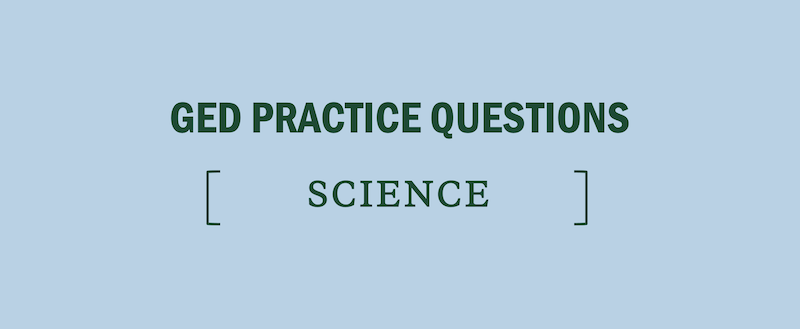How to Study for the GED in a Month
The GED is an alternative to a high school diploma. Instead of graduating from high school, you’ll receive a test score vouching for your high school knowledge equivalency and college readiness. If you do well, you can apply for college and jobs as if you had a high school diploma. Because there’s a lot riding on your GED score, and because you’re probably juggling GED prep with lots of other time commitments, studying for and taking the GED might seem daunting. But rest assured, you can be prepared for the GED in a month if you’re willing to make studying a priority.
[ GOOD TO KNOW: What to expect on GED test day ]
Work Backward to prep for the GED
The first thing you need to do is choose a test date. The GED is comprised of four sub-tests: Mathematical Reasoning, Reasoning Through Language Arts, Social Studies, and Science. You don’t need to take all of these tests at once; depending on what your schedule is, and how busy you are with extracurriculars, jobs, etc., you might choose to take them all on the same day or space them out over a few weeks. Just keep in mind that if you do choose to take all four tests on the same day, you’ll need to work on building up your testing endurance in addition to studying the material; all tests combined will take you over seven hours. Most people choose to space out their testing. But however you choose to schedule your testing, it’s a good idea to schedule your test dates early.
Each testing center sets its own test dates, so you’ll need to log in to your account at the GED website in order to check testing centers in your state. Once you’ve done that, you can create a study plan to make sure you’re ready for test day.
Next, make a calendar working backwards from your test date. It’s a good idea to work your study plans into your normal schedule, so use a planner or online calendar that you already use to schedule out your study time. You should plan on studying 4-5 days a week, for at least 90 minutes per day. Choose the blocks of time you’ll spend studying, and stick to them! Treat your study blocks as you would any other binding commitment, like a shift at work or a doctor’s appointment. If you don’t put in the time to study for the GED now, your score will suffer later.
Gauge Your Readiness for the GED Test
The best way to measure your GED readiness is to take a diagnostic test. Take a practice test for each of the four subtests under test-like conditions— find a quiet place free from distractions to test, set a timer, put your phone away, and don’t take unscheduled breaks.
[ KAPLAN’S GED PRACTICE QUESTIONS: Social Studies • Mathematical Reasoning • Science • Language Arts ]
If you’re planning on taking all the subtests on the same day, you’ll want to start working on endurance soon. But for this first diagnostic test, just focus on the content. Regardless of how you plan on testing, you don’t need to take all four practice tests in one day—instead, plan out a block of time for each test over the course of a few days (or even weeks!). Later, if you need to build up endurance, you can increase the number of practice tests you take in a day.
Soon after every practice test, you should spend time reviewing and remediating the questions on the test. Look at all the questions—not just the ones you got wrong. That way, you can solidify the information you do know, and make sure none of your correct answers were just lucky guesses. When you come across an answer you got wrong, make sure you understand why. Make lists of topics you consistently struggle with so you can focus your study time effectively.
GED Test Topic Review
Let the results of your practice test determine how you spend the rest of your time studying. The lists of topics you made after your diagnostic tests should give you a good baseline for what you need to spend your time working on.
If there’s a sub-topic you understand very well, don’t spend too much time reviewing it (even though it might boost your overall GED confidence). You won’t forget what you know in between your practice test and the real GED, and you can make better use of your time by focusing on areas that need some extra support.
That being said, if there’s a specific sub-topic that you have a really hard time understanding, right before the test is not the time to give yourself a crash course. There’s a very low likelihood that you’ll master a topic in a month that you’ve struggled with for a long time. The time you would spend studying a topic you’ve never understood well could be better spent reviewing topics that just need a little more study time before you’re comfortable with them. If you find that there are many topics that need some serious work before you’ll be comfortable testing, consider changing your GED test date. It’s better to feel confident going in and score well the first time than to have to retest.
GED Test Sample Study Schedule
You can use this schedule to plan out your GED studying if you’re planning on taking the four tests on different days.
| Week # | Sunday | Monday | Tuesday | Wednesday | Thursday | Friday | Saturday |
|---|---|---|---|---|---|---|---|
| 1 | RLA practice test (150 mins) | Review practice test answers (2 hours) | Topic focus (2 hours) | Topic focus (2 hours) | Practice questions (1 hour) | Practice questions (15 minutes), and relax! | RLA Test Day |
| 2 | Mathematical Reasoning practice test (115 minutes) | Review practice test answers (2 hours) | Topic focus (2 hours) | Topic focus (2 hours) | Practice questions (1 hour) | Practice questions (15 minutes), and relax! | Mathematical Reasoning Test Day |
| 3 | Social Studies practice test (70 mins) | Review practice test answers (2 hours) | Topic focus (2 hours) | Topic focus (2 hours) | Practice questions (1 hour) | Practice questions (15 minutes), and relax! | Social Studies Test Day |
| 4 | Science practice test (90 mins) | Review practice test answers (2 hours) | Topic focus (2 hours) | Topic focus (2 hours) | Practice questions (1 hour) | Practice questions (15 minutes), and relax! | Social Studies Test Day |







